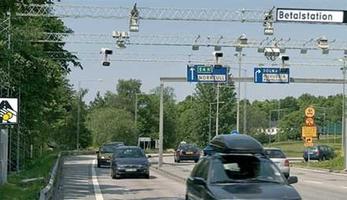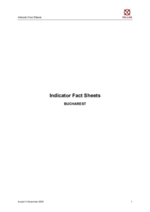Preparing a congestion charging scheme
Thematic areas
Demand & urban space management
- Access restrictions and management
- Parking management and pricing
Summary
The full-scale trial was carried out to test whether congestion charges improve traffic flow, decrease emissions and enhance the urban environment.
Implementing sustainable mobility
The measure was implemented in response to the severe congestion on the main access roads into Stockholm during peak hours. The trial was carried out between January and July 2006 with the aim of demonstrating how congestion charging might:
- reduce the amount of traffic on the most frequented roads during peak hours
- reduce congestion and increase accessibility;
- provide other cities with best-practice strategies;
- increase the use of clean vehicles;
- promote the use of public transport
- reduce emissions of carbon dioxide, nitrogen oxides and particulates;
- reduce noise levels;
- cut fuel consumption; and
- make the city centre more attractive.
Progress
The trial included significant investments in public transport and park and ride facilities. Measure activities included an assessment of the current traffic situation; the development of zone limits, tariffs and time limits; the development of operative targets; and the implementation of an evaluation scheme. The technology used in the trial was DSRC (dedicated short-range communication) microwave technology, previously used in Singapore and Melbourne. The system comprises on-board units (OBU), roadside receivers and cameras mounted at access points to the city centre. Vehicles passing through the zone boundary communicate with the OBU receivers. All vehicles are automatically photographed so that those without a receiver can also be recognised. The system does not impede the throughput of traffic, and emergency, military and clean vehicles, as well as motorcycles and taxis, are exempt from charges. In the Stockholm trial, the system had a single zone boundary encircling the city centre. Tariffs varied according to time of day, with higher charges during peak periods.
Outcomes
The trial was implemented with positive results. The proposal for a permanent congestion charge was subsequently approved in a referendum and the system was put into operation in August 2007. The DSRC system did not function according to expectations and was subsequently taken out of service and vehicles being monitored solely by camera at the various checkpoints. The structure of the exemptions was also changed.
An evaluation of congestion charging for the period 2006 to 2008 was completed in 2009. The results were positive, indicating an 18 percent reduction of traffic in the congestion charge zone (96,000 vehicles per day).
Around one-third of all trips were through trips and around 28 percent of vehicles benefitted from exemptions. An increase was observed in the number of vehicles using alternative fuels, which had exemption from the congestion charge until July 2012. The introduction of the congestion charge had a positive impact on road safety. Use of the city’s park and ride facilities increased, and more people started using public transport and cycling. It also attracted a high level of public acceptance.









